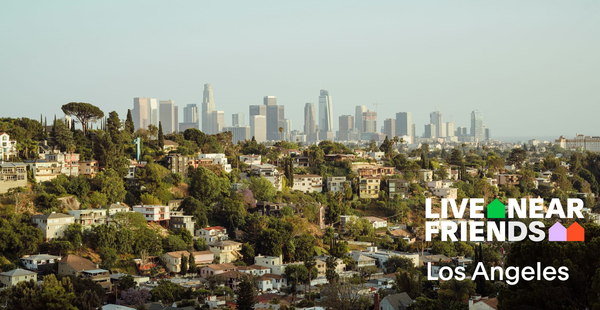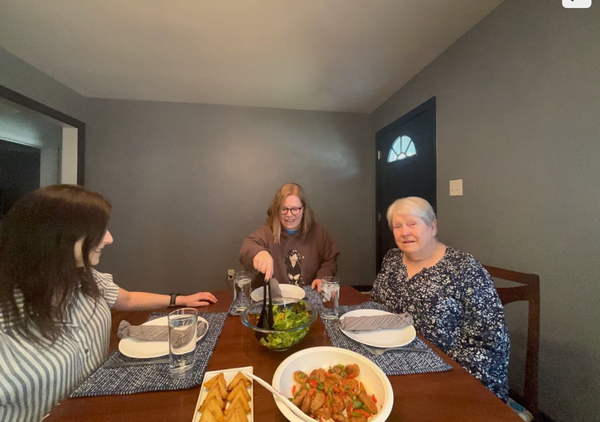The new Seattle housing laws that make it easier to live near friends
Grab your party hat, bring on the noisemakers, and pop the champagne (if that’s your thing). Seattle is making it easier, and more affordable, to live near family and friends.
Over the past several years, both the City of Seattle and Washington State have passed a wave of changes to zoning density, construction, and co-living rules.
In real terms, that means relaxing the rules around ADUs and DADUs, the One Seattle Plan to restore “missing middle housing,” and legislation to allow more co-living developments.
Here’s everything you need to know about the changes.
Putting the YOU in ADU (and AADU and DADU)
Let’s start with our absolute fav for living near friends in Seattle: ADUs. An accessory dwelling unit (ADU) is a dwelling that’s basically a separate, legally permitted living space from a regular house.
In Seattle, we typically see two kinds of ADUs:
- Attached ADU: A conversion or addition within a house. (AADU, but here in Seattle usually referred to simply as an “ADU”.) Often on the basement or garden level.
- Detached ADU: A physically separate unit on the same property (DADU, sometimes also known as a garden or backyard cottage). Bonus: Tiny houses with foundations are also considered DADUs.*
*Note: Tiny houses on wheels are treated like camper trailers by the City and do not count as DADUs. Any digital nomads in your group need to follow parking rules.
Seattle allows two ADUs/DADUs per home in most residential areas. That’s right, TWO.
When you’re trying to live near friends, ADUs expand the range of properties you can consider. Instead of limiting your search to duplexes and triplexes, look for a home that already has two AADUs or one with an AADU and a DADU. Alternatively, find a great single-family home with potential and build your own.
At Live Near Friends we can help you search for both.
Either option is much cheaper than buying or building a second single-family home. For example, AADU conversions in Seattle range from $80,000 to $150,000 depending on scope and specs. And new construction DADUs and AADUs can be anywhere from $300,000 to $650,000, depending on utility access and/or the design and materials you choose.
“In the Seattle area, ADUs are being built like crazy—it’s currently one of the most practical ways to work within local zoning rules and square footage minimums. A setup with three homes on a single lot makes an incredible friend compound. You usually get some intentionally designed private space that can also be combined into shared gathering areas. It’s also one of the most affordable small-home options in the city.”
- Alexander Keyes, Live Near Friends Seattle Realtor
One Seattle Plan — AKA implementing HB 1110
We all know that buying a home in Seattle can be a scramble (if not a completely undignified coming to fisticuffs over escalations and waivers), especially when interest rates are rising and inventory is falling.
Great news!
In 2023, the Washington State Legislature adopted House Bill 1110 (HB 1110), requiring cities in Washington to address “missing middle” housing throughout residential areas.
As a result, Seattle initiated significant zoning reforms, replacing single-family zoning with Neighborhood Residential (NR) zones. The changes, due to take effect in July this year, will diversify housing options, enhance affordability, and create more walkable, connected communities.
In the new NR zones, Seattle is allowing at least:
- 4 units on all residential lots
- 6 units on residential lots within a quarter mile of major transit stops (like light rail or bus rapid transit)
- 6 units on residential lots if two units are income-restricted affordable housing
Floor Area Ratio (FAR) limits will also change, giving builders will have greater flexibility in the design and construction of multi-unit structures:
- The FAR for attached and detached dwelling units will increase from 0.9 to 1.2
- And to 1.4 for stacked dwellings
- Floor areas in ADUs will also count towards the FAR.
Units can be detached (like DADUs) or attached (like duplexes or triplexes) and the number of ADUs/DADUs allowed is based on the density limit rather than lot size. For example, on a lot where four units are allowed, you could build four principal dwellings or two principal dwelling units with two ADUs.
These updates will lead to a greater variety of housing across Seattle and open up more options and more housing combinations for those of us who want to live near friends.
Imagine buying a single-family home, building your two permitted ADUs, and then having even more friends and family in the 4-plex on the next-door lot. Or buying a tear-down with a big yard and building the homes you always imagined for your friend group or extended family.
That’s some minihood magic!
Seattle has removed restrictions on co-living—woohoo!
While we’re celebrating, let’s talk about the implementation of HB 1998.
Co-living spaces (sometimes known as “congregate residences”) feature independently rentable sleeping rooms with shared kitchens and other common areas. They’re affordable for residents and can be a flexible way for folks to live together and build a community.
Seattle introduced tight restrictions on co-living and micro-housing developments 10 years ago, prohibiting them in many parts of the city. Thanks to HB 1998, that’s changing. Recognizing the need to lower costs across and create affordable communities, Seattle is now:
- Allowing co-living residences in multifamily zones.
- Removing design standards so there’s flexibility in how communal areas can be configured.
- Removing parking requirements within 0.5 miles of a major transit stop (think light rail or rapid transit).
All that could make formalizing your house share and sharing the ownership and management of a property like this tasty Cap Hill example much simpler.
We’ll get you started
Living near friends is now more feasible with many more options available to those of us in the Emerald City. It’s a change for Seattle that may turn out to be right up there with the laws that preserved our iconic houseboats.
If you’re trying to figure out the right housing opportunities for your group, the best place to start is to set up a call with a Live Near Friends advisor, who will get you pointed in the right direction.





